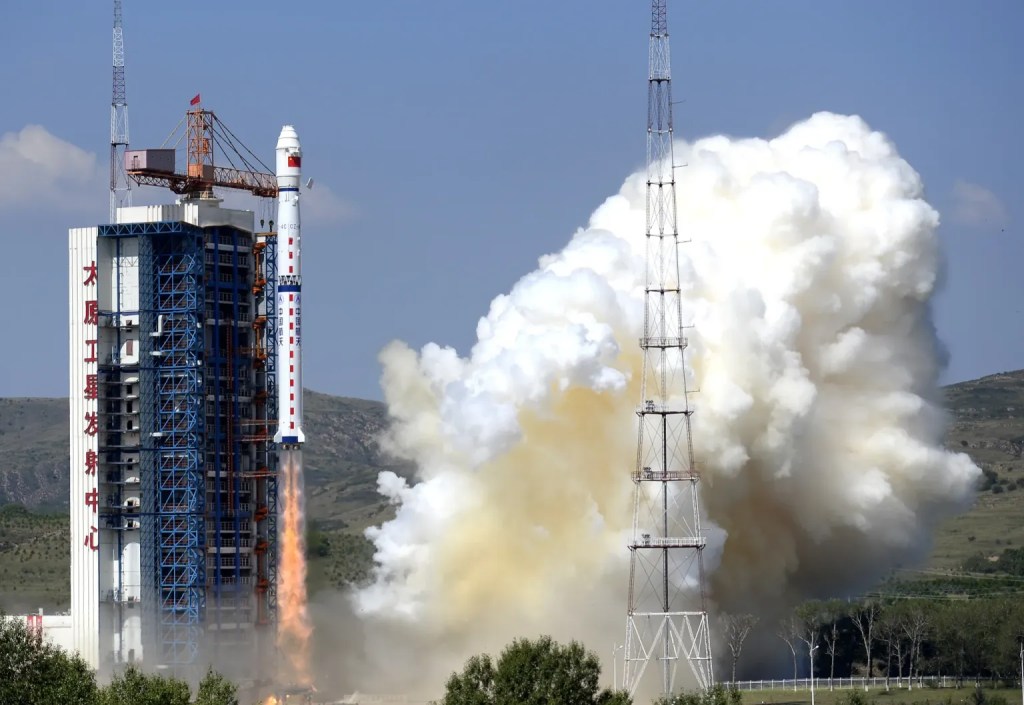Featured image credit: Xinhua
Lift Off Time | April 15, 2022 – 18:16 UTC | 02:16 BJT |
|---|---|
Mission Name | Daqi-1 |
Launch Provider | China Aerospace Science and Technology Corporation (CASC) |
Customer | Shanghai Academy of Spaceflight Technology (SAST) |
Rocket | Long March 4C |
Launch Location | Launch Complex 9 (LC-9), Taiyuan Satellite Launch Center, China |
Payload mass | Unknown, up to 2,800 kg |
Where did the satellite go? | Sun-synchronous orbit |
Did they attempt to recover the first stage? | No, this is not a capability of the Long March 4C |
Where did the first stage land? | It crashed over land in north China |
Did they attempt to recover the fairings? | No, this is not a capability of the Long March 4C |
Were these fairings new? | Yes |
This was the: | – 416th Long March launch |
Where to watch | If available, an official replay will be listed here |
How Did It Go?
A Long March 11 rocket successfully launched from the Taiyuan Satellite Launch Center in China, taking the Daqi-1 satellite to a Sun-synchronous orbit.
What Is the Daqi-1?
The Daqi-1 is an atmospheric environment monitoring satellite developed by the Shanghai Academy of Spaceflight Technology (SAST). The satellite will be used for atmospheric pollution and global carbon monitoring, and is expected to be operational for 8 years. The Daqi-1 is based on the SAT-5000B satellite bus, and is most similar to the Gaofen 5 satellite.
The satellite has five remote sensing instruments:
- ACDL (Aerosol and Carbon dioxide Detection Lidar)
- DPC-II (Directional Polarimetric Camera)
- EMI-II (Environmental Trace Gas Monitoring Instrument)
- POSP (Particulate Observing Scanning Polarization)
- WSI (Wide Spectral Imager)
Long March 4C
The Long March 4C is a three-stage medium-lift launch vehicle derived from China’s Long March 4B vehicle. It is able to lift up to 4,200 kg into low-Earth orbit, 2,600 kg into a Sun-synchronous orbit, and up to 1,500 kg into geostationary transfer orbit (GTO).

First Stage
The first stage has four open cycle YF-21C engines. Each engine runs on dinitrogen tetroxide (N2O4) and unsymmetrical dimethylhydrazine (UDMH), producing 740 kN of thrust, with a specific impulse (ISP) of 260 seconds. Overall, the first stage produces 2,960 kN of thrust and carries 182,000 kg of propellant. The first stage is 27.91 m tall, and 3.35 m in diameter.
Second Stage
The second stage runs on a single YF-24C engine, which contains one main YF-22C engine for thrust, and four YF-23C attitude control thrusters. The main engine produces 742 kN of thrust and the attitude control thrusters each produce 47 kN, and both run on N2O4 and UDMH. The main engine’s ISP is 300 seconds, and the attitude control thrusters have an ISP of 289 seconds. The second stage is 10.9 m tall, 3.35 m in diameter, and carries 52,700 kg of propellant.
Third Stage
The third stage has two open cycle YF-40A engines that also run on N2O4 and UDMH. Each engine produces just over 100 kN of thrust and has an ISP of 303 seconds. The third stage is 14.8 m tall and 2.9 m wide.
Rocket section adapted from Trevor Sesnic




